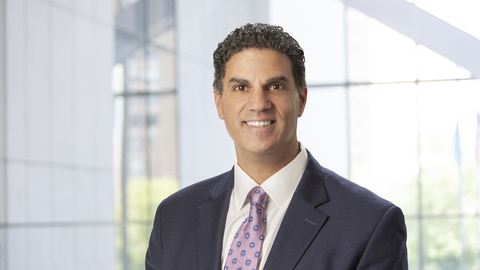Investors fear liquidity crisis, military conflict, cyberattacks, PGIM tail-risk survey finds

Shehriyar Antia, Head of
The survey of 400 senior investment decision-makers at institutional investors in
“Too often investors are surprised by things that in retrospect were staring them in the face,” said Shehriyar Antia, head of
THREE SCENARIOS THAT KEEP INVESTORS UP AT NIGHT
Presented with geopolitical, economic, social and environmental scenarios ranging from a eurozone country debt default to a nuclear attack, respondents named their top three tail risks:
-
An unexpected liquidity crunch in key capital markets (
U.S. Treasuries, commodities, etc.) that results in a market crash. The tail-risk scenario seen as having the greatest market impact and one for which investors are least prepared is a major liquidity event in financial markets. A liquidity event in a “safe haven” likeU.S. Treasuries would have cascading effects that neither capital providers nor investors would necessarily be prepared for. -
Military conflict in the
Taiwan Strait orSouth China Sea . A military conflict in theTaiwan Strait orSouth China Sea would have stark ramifications for global financial markets, so it’s no surprise institutional investors cited such a conflict as their second-highest tail risk, and one they feel least prepared for. According to theSemiconductor Industry Association , ifTaiwan semiconductor production were to shut down for a year, the cost to annual revenue for device makers worldwide would be$490 billion -
A cyberattack disables a major financial platform or government agency for a significant period of time. Only
30% of respondents said they are prepared for such a major cyberattack — despite this being seen as one of the most likely tail risks to occur over the next three years.
INVESTORS CAN DO MORE TO PREPARE FOR THE WORST
By definition, tail risks are rare and unexpected, which makes them exceedingly difficult to prepare for. But there are ways investors can hedge their bets.
-
Investors acknowledge a variety of gaps and shortcomings in their investment risk monitoring, chief of which are failure to detect risks early (
36% ) or react to them speedily (41% ). -
More than a third also say they are unable to predict black swans (
36% ) and, worryingly, nearly 3 in 10 identify risk management complacency as a key challenge. -
Institutional investors deploy three main approaches to monitor investment risk: holistic monitoring across asset classes (
44% ), regular risk scenario analysis (41% ) and regular evaluation of the effectiveness of risk management processes (41% ).
“The best insurance against such rare and complex events is taking a long-term view and diversifying portfolios,” advised
Monitoring leverage, collateral arrangements, and liquidity positions through these shocks can help investors avoid becoming a forced seller while the event is unfolding. When considering risks that are subject to extreme outcomes (and potentially not diversifiable), investors should also consider stress testing as opposed to looking at traditional statistical measures that make assumptions which may not be realistic for some exposures.
For more information and country-specific data, read the full report: 2022 Global Risk Report: Tail Risks.
ABOUT THE SURVEY
The study gathered the views of 400 institutional investors globally from defined benefit pension funds, corporate pension funds, sovereign wealth funds, central banks, endowments and foundations. The online survey was conducted by
Respondents are aged 30-70 and have been in their current role for at least one year. Almost all (
ABOUT PGIM
PGIM is the global asset management business of
View source version on businesswire.com: https://www.businesswire.com/news/home/20221110005222/en/
MEDIA
Julia O’Brien
+1 862 754 0005
julia.obrien@pgim.com
Source:







